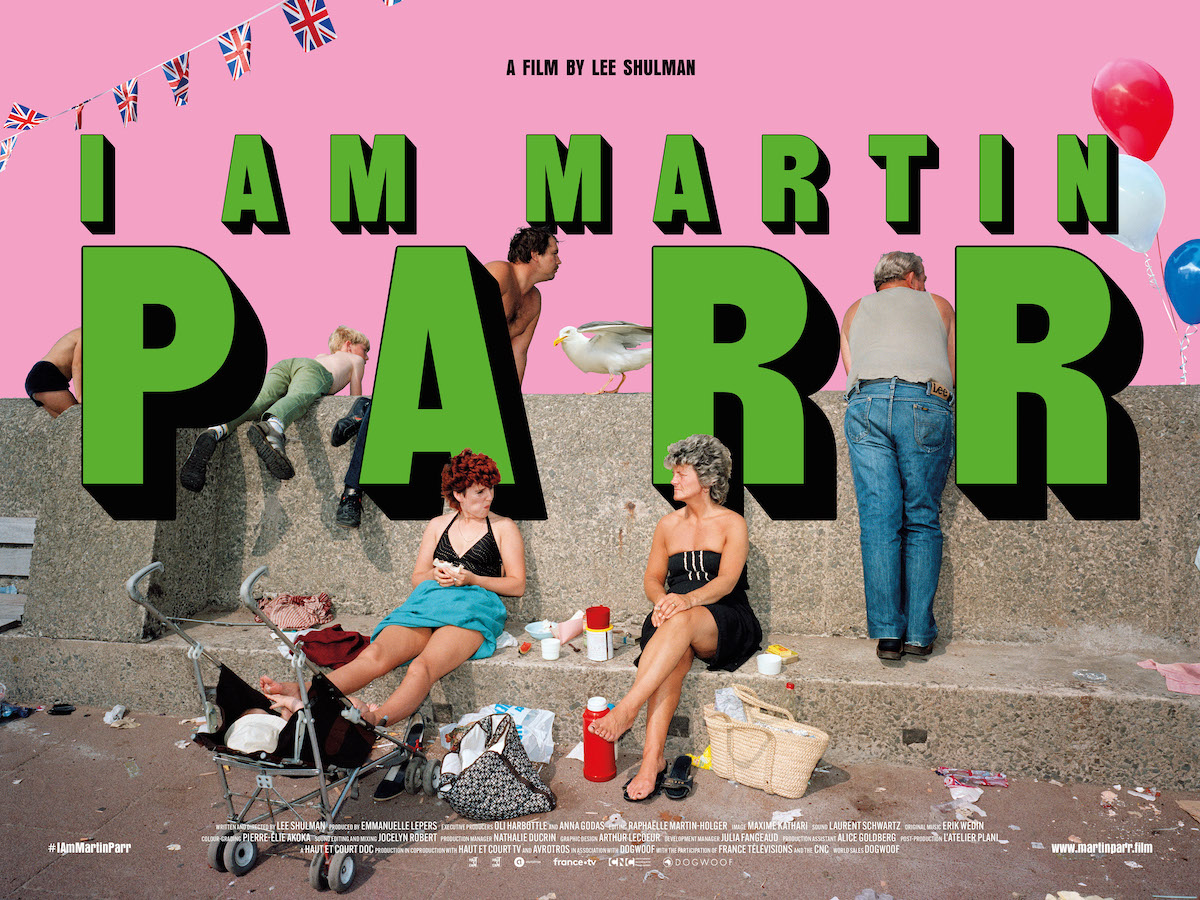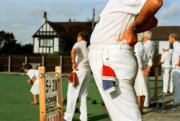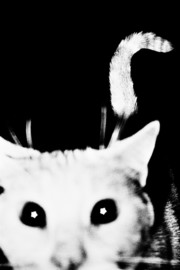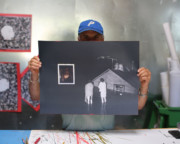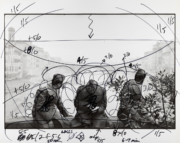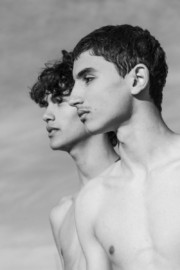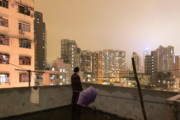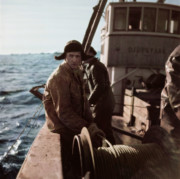I Am Martin Parr
A new documentary directed by Lee Shulman explores the life and work of Martin Parr
“You have to have that belief early in the morning before you go out, that this could be the day when something happens,” Martin Parr says in the newly released documentary, I Am Martin Parr, chronicling the photographer’s life work. The documentary’s portrait of Parr, who was born in Surrey in 1952, explores this daily hunt for a worthy moment to materialize, with Parr taking up the challenge again and again. Parr’s “needle-sharp eye for the material culture of our times,” as artist Grayson Perry says in the film, has been translating the seemingly mundane into a hyper-real commentary on people’s tastes, choices, and modes of leisure throughout the decades.
Released by Dogwoof and directed by Lee Shulman, the collector behind The Anonymous Project, this retrospective documentary follows Parr as he steps into his earlier photos, revisiting the places he photographed decades before. After Parr and Shulman met at the latter’s exhibition in 2019, a collaboration between them soon took shape. In 2021 they released the book and project Déjà View, which was displayed in the Magnum galleries in Paris and London. Shulman’s vision for the film is that it contributes to Parr’s “aesthetic and political legacy as the ‘people’s photographer.’”
The documentary introduces us to some of Parr’s close entourage — his wife, fellow artists — as well as curators and staff members at the Martin Parr Foundation, an exhibition space Parr founded in 2017 in Bristol. Parr himself is seen only in action, revealing the inner workings of his photographic language. This close pursuit of the artist at work serves as a backdrop for chronological flashbacks to Parr’s personal and professional life, beginning with his lesser-known work in black and white.
As a child, Parr spent time in Yorkshire with his grandfather, George Parr, an amateur photographer, whose introduction to shooting and printing triggered his interest in photography. At the age of 11, he took his first photograph of his father on a frozen stream. “By the age of 13 or 14, I wanted to be a photographer, nothing else was going to happen,” Parr declares.
He admits that photography is an obsession, one among many: “Of course I’m obsessed, and that’s one of the things that drives you on.” His obsessive genes were passed down from his parents who were avid bird watchers, so much so that family holidays involved catching migratory birds in nets to collect data. Parr intimates that these early years fed his desire to collect society’s eccentricities, amassing moments of leisure and the rhythms of daily consumption. His photographs indirectly show that human social trajectories are also migratory, always in flux as seismic societal changes pull us into a new undertow.
In the 1970s, Parr would discover communities of farmers and chapel-goers in Yorkshire, where he documented their rituals with a quiet, humanist approach, often at a cordial distance. In 1979, Parr set out for Ireland, where he photographed, among many other subjects, the abandoned Morris Minors across the Irish countryside, after the economy car had been discontinued, which encouraged his inclination towards the art of social commentary.
"You have to have that belief early in the morning before you go out, that this could be the day when something happens."
-
“We can see by his work that he’s not a cynical person at all, perhaps we can see his interest in social engagement clearer in black and white,” Magnum photographer Harry Gruyaert comments. Black and white was Parr’s practice for nearly 15 years, until 1982, when he found himself back in England with the latest wide angle, medium format Plaubel camera in hand. American color photographers Joel Meyerowitz, William Eggleston and Stephen Shore had begun to inspire a fresh artistic impulse for Parr. “I changed to color, and never looked back,” he recalls.
The film presents an in-depth look of how Parr’s technique, characterized by his macro lens and saturated color, fueled his more direct form of social critique, beginning in the 1980s. New Brighton on the bay of Liverpool, then a scruffy seaside resort, provided a beach setting where vacationers relinquished formalities, exposing unfiltered versions of themselves. It also set the stage for Parr’s singular vision at a turning point for the working class under Margaret Thatcher’s privatized neoliberalism.
Using a ring flash and uncompromising close-ups, Parr puts the viewer in the heart of the scene in what would become his seminal work, The Last Resort. “Generally speaking I’m in the midst of things,” Parr explains, “[…] it’s the only way to put components together in some kind of interesting form.” The film features conversations with Magnum photographer Bruce Gilden, who recalls that, at that time, “everyone was out photographing the English, but Martin was one of the best ones, even at that point of his photographic career.”
The documentary also calls attention to Parr’s lesser-known work in color, such as the 1998 series “Japanese Commuters”, which portrays hovering close-ups of Japanese workers sleeping on public transport in Tokyo, published in the photo book Japonais Endormis by Galerie du Jour.
"Of course I’m obsessed, and that’s one of the things that drives you on."
-
While revisiting the various themes that served as Parr’s artistic conduits throughout the years, the film doesn’t shy away from his clash with the critique of the “academe”, as Perry says in the film. According to Perry, it’s Parr’s ability to capture the undeniable humor and eccentricity of everyday life that keeps this critique in check. “I’m trying to show the yin and yang of British society,” Parr says, “and to show it as I find it, as opposed to some idea of it being romantic or good or bad, and to try and show both things.” Parr’s candid documentation of consumer culture from kitsch to luxury came under scrutiny before he became a full member of Magnum in 1994. He would go on to be the president of the cooperative from 2013 to 2017.
Interviewed in the film, Samantha McCoy, director of the Magnum Gallery in Paris, weighs in on the debate: “One of the reasons that Martin’s work can be so controversial is that he asks us to look at what we try to negate. […] Life is not always picturesque and beautiful, or perhaps we need to redefine what our notion of beauty is.” In effect, this micro-gaze that strips reality bare offers a political commentary on capitalism at large: “You can argue that our greed for all the consumables in the world is going to be partly responsible for global climate warning. […] I’m aware of things like this and I’m glad my photographs introduce these topics albeit very subtly,” Parr says.
One of the undeniable elements throughout the dialogue in I am Martin Parr is his prolific oeuvre. “To be frank,” Gilden says, “I don’t know how he did it all. Because he did so much […] it’s like this insatiable need, and that’s why he’s good at what he does.” The film serves as a playful retrospective, celebrating the photographer’s vision, humanism and politically-charged visual vernacular as he continues to archive our ever-evolving society.
Parr’s latest book, No Smoking (available here in the Magnum Shop), which saw its second print in 2024 with The Rocket Press, interrogates the evolution of smoking culture, spanning Parr’s entire career, with photographs from 1970 to 2019. Currently a point of contention in the UK, as the government introduces laws to create “a smoke-free generation,” phasing out the sale of tobacco products to anyone aged 15 or younger, the theme is an inevitably recurring feature in Parr’s work, from the beaches of Benidorm to North Korea.
Book tickets to see I am Martin Parr in theaters across the UK here.


















